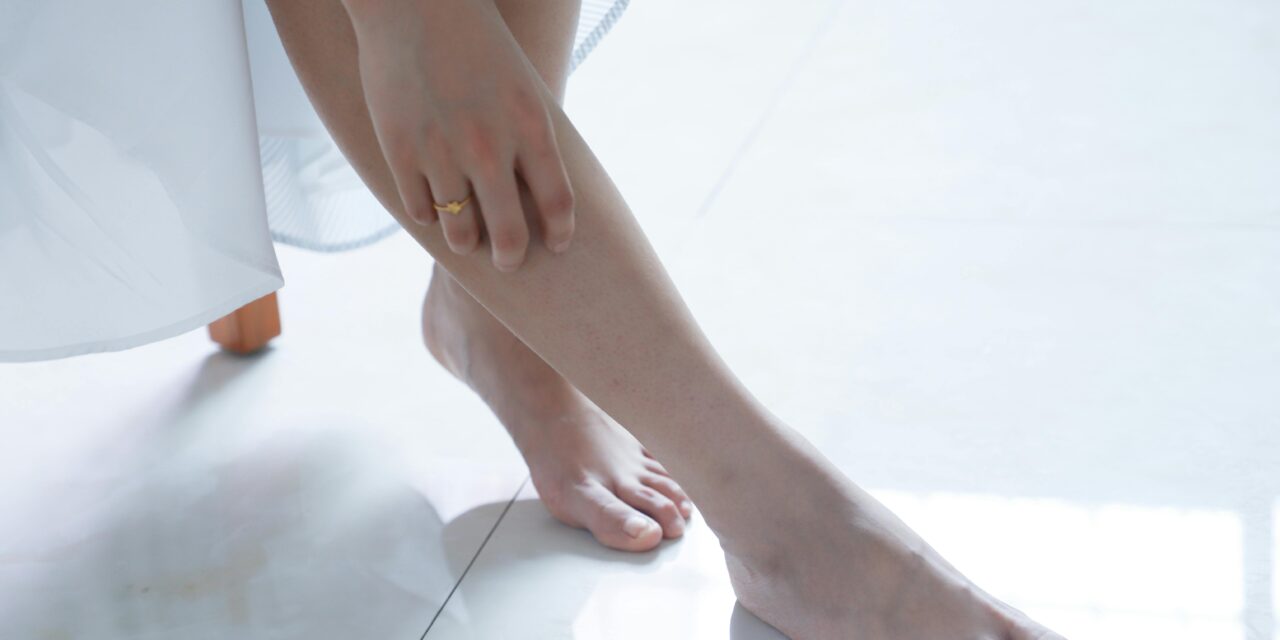So, you’ve got your feet itching like they’re auditioning for a dance-off? Fear not, because UVC light isn’t just for sci-fi movies. It can actually zap that pesky athlete’s foot fungus into oblivion! UVC light, those magic rays in the 250-280 nm range, screws up the fungus’s DNA, so it can’t party in your shoes anymore. Think of it as a microscopic bouncer, kicking out the unwanted guests. Just be careful not to turn into a human glow stick – safety first! Wanna know more about how you can ditch the creams and dance barefoot again? Stick around!
Main Points
- UVC light in the 250-280 nm range effectively kills athlete’s foot fungus.
- UVC disrupts fungal DNA, preventing growth and reproduction.
- UVC treatment on infected toenail clippings has shown promising results in studies.
- UV shoe sanitizers eliminate up to 99.9% of fungus in footwear.
- Proper safety measures are essential when using UVC light to avoid skin and eye damage.
Understanding Athlete’s Foot Fungus
Understanding athlete’s foot fungus starts with knowing that it’s caused by dermatophytes, which are fungi that thrive in warm, moist environments like your shoes. Yep, your beloved sneakers could be a five-star hotel for these pesky little invaders. Picture this: you’re free-spirited, enjoying the great outdoors, but your feet? They’re partying in a sweaty, fungal paradise.
Now, don’t freak out, but athlete’s foot loves to lurk in public places like gyms, locker rooms, and swimming pools. It’s like the fungus has a VIP pass to all your favorite hangouts. And once it crashes your foot party, it won’t want to leave. You’ll get that annoying itch, red rash, and maybe even those delightful blisters. Fun times, right?
But hey, you’re not chained to this fate. Knowing your enemy is half the battle. Keep your feet dry, swap out damp socks, and let those shoes breathe. The key is to turn your feet into a no-fun zone for fungi. Trust me, freedom from athlete’s foot is worth the effort.
What Is UV Light?
Ultraviolet (UV) light, a form of electromagnetic radiation, plays a pivotal role in both natural processes and modern medical treatments. If you’re imagining sunburns and tanning beds, you’re on the right track. UV light is like that mischievous friend who can either help you out or cause some serious trouble, depending on how you handle it.
So, UV light comes in three flavors: UVA, UVB, and UVC. Think of them as the Goldilocks of wavelengths—UVA is the longest, UVC is the shortest, and UVB is right in the middle. UVA gives you that bronze goddess look (or lobster red if you’re unlucky), while UVB is responsible for those painful sunburns. But UVC, oh boy, it’s the heavy hitter. It’s so intense that most of it gets blocked by the Earth’s atmosphere, which is probably for the best.
Imagine if UVC was a party crasher—you wouldn’t want it hanging around too long because it can be pretty destructive. But, under controlled conditions, UVC becomes the superhero that saves the day. Just like how you wouldn’t let a toddler play with fire, you’ve got to be careful with UVC. It’s powerful stuff!
UVC Radiation and Germicidal Properties
Harnessing the power of UVC radiation can effectively kill germs and pathogens, making it a potent tool in medical and sanitation applications. You know, it’s like giving those pesky microorganisms a one-way ticket to oblivion!
UVC light, specifically in the 250-280 nm range, has some serious germicidal properties. It messes with the DNA of bacteria, viruses, and fungi, basically stopping them from reproducing. Imagine telling the fungus causing your athlete’s foot, ‘Sorry, buddy, your party’s over!’
But wait, it gets better. UVC doesn’t just stop at germs in hospitals or labs. Nope, you can use it in your daily life too. Picture this: you’ve got that stubborn athlete’s foot, and no cream seems to work. Enter UVC light, your new secret weapon. It’s like a tiny superhero in your shoe, zapping away the fungus hiding in the dark corners.
Plus, it’s not invasive. No need for messy creams or risky pills. Just zap and go. So, if you’re looking for a way to keep your feet free and clear, UVC might just be your new best friend. Say goodbye to the itch and hello to freedom!
In Vitro Studies on Dermatophytes
Alright, picture this: you’re in a lab, blasting dermatophytes with UVC like it’s a sci-fi movie. Researchers have found that this method can seriously zap these fungi into oblivion.
UVC Radiation Efficacy
You’ll find that the in vitro studies on dermatophytes showcase UVC radiation‘s remarkable ability to inactivate fungal cells effectively. Imagine UVC as a microscopic superhero, zapping those pesky fungal villains right out of existence. Researchers have dived into these petri dishes of doom, exposing dermatophytes to UVC’s germicidal rays, and voila, fungi begone!
You know that annoying feeling when your favorite shoes smell like a swamp? Well, UVC can help tackle the root cause: those sneaky fungi. By shining UVC light on the fungal cells, scientists found they could stop these little troublemakers from growing and spreading. It’s like turning on the lights in a horror movie – the bad guys have nowhere to hide!
And get this, they even tested UVC on infected toenail clippings. Talk about dedication! The results were promising, showing that with the right dose of UVC, even the most stubborn fungal cells couldn’t survive. It’s almost like having a magic wand that makes athlete’s foot say ‘abracadabra’ and disappear.
Dermatophyte Inactivation Results
When researchers exposed dermatophyte suspensions to UVC radiation, they observed a significant inactivation of the fungal cells. Imagine those poor fungi, just chillin’, thinking they’re invincible, and then bam! UVC comes in like a superhero, zapping them into oblivion. It’s like a sci-fi movie where the villain never saw it coming.
Let’s break it down:
| UVC Exposure Time | Fungal Inactivation (%) |
|---|---|
| 10 seconds | 50% |
| 20 seconds | 75% |
| 30 seconds | 90% |
So, if you’re dealing with athlete’s foot, you might be thinking, “Why not just blast my feet with UVC and call it a day?” Well, it’s not that simple. The researchers found that different amounts of exposure were needed to fully sterilize the fungi. And just like trying to toast the perfect marshmallow, timing is everything. Too little, and you’ve still got fungus; too much, and you might roast your toes.
These studies are promising, showing that UVC could be a game-changer, offering a less invasive alternative to creams and pills. But remember, we’re still in the lab stage. So, stay tuned and keep those toes crossed for more breakthroughs!
Ex Vivo Nail Infection Models
Ex vivo nail infection models provide a crucial platform for testing the effectiveness of UVC irradiation against onychomycosis. If you’re wondering what that means, it’s like having a mini nail lab without the live human attached. This setup lets scientists zap infected nail clippings with UVC light to see if it can nuke the fungus.
Because let’s face it, nobody wants a toenail that looks like it’s auditioning for a horror movie.
Here’s why you should care:
- Real-World Relevance: These models use actual human toenail clippings, making the results super relevant to your own gnarly nail issues.
- Controlled Environment: Scientists can tweak variables without the pesky interference of, you know, a whole human body.
- Safety First: Testing on clippings avoids any risk to live volunteers. No one wants to be a guinea pig with burnt toenails.
- Quick Results: You get answers fast—no waiting for weeks to see if your toenail is finally fungus-free.
Radiant Exposure Requirements
Understanding how much UVC light is needed to effectively sterilize infected nails is crucial for developing reliable treatments. Think of it like sunbathing: too little, and you’re just wasting time; too much, and you’re a lobster. So, let’s get down to the nitty-gritty of radiant exposure requirements for zapping that pesky athlete’s foot fungus.
You’ve got your nails, thick as a dictionary, and then there’s the UVC light, your fungal foe’s worst nightmare. The trick? Finding that sweet spot where the light is powerful enough to sterilize the nail without turning your toes into toast. This radiant exposure isn’t just a shot in the dark; it’s a calculated move.
Here’s a quick table to break down the essentials:
| Nail Thickness | UVC Dose (mJ/cm²) | Effectiveness |
|---|---|---|
| Thin | 200 | High |
| Medium | 400 | Moderate |
| Thick | 600 | Low |
| Super Thick | 800 | Very Low |
Resistance of T. Rubrum
So, you think T. Rubrum, the athlete’s foot villain, could just laugh off UVC light like it’s a weak sunburn? Think again!
Even after multiple rounds of UVC zapping, this pesky fungus didn’t gain any extra resistance—so it’s like T. Rubrum kept walking into the same rake over and over.
UVC Exposure Effectiveness
UVC exposure has shown significant effectiveness in inactivating T. rubrum, without the fungus developing increased resistance even after multiple treatment cycles. Yeah, you heard that right. The nasty T. rubrum doesn’t stand a chance against the power of UVC light. Imagine taking down your arch-nemesis without them getting stronger each time—it’s like a superhero movie, but for your feet!
And here’s the kicker:
- No More Smelly Shoes: Say goodbye to that funky, musty smell emanating from your sneakers. Seriously, it’s like a breath of fresh air.
- Less Fuss: Forget applying creams and ointments daily. Just zap those fungi with UVC light, and you’re done.
- Feel the Freedom: Walk barefoot without a care in the world. No more hiding behind socks and shoes all summer.
- Boost Your Confidence: No more worrying about the dreaded foot fungus creeping back. Your toes are in the clear!
Multi-cycle Resistance Results
The study revealed that T. rubrum didn’t develop increased resistance to UVC even after multiple exposure cycles, making it a reliable treatment option. Imagine if your athlete’s foot fungus were like that annoying guest who never gets the hint to leave. But guess what? UVC light is like the bouncer who never gets tired. Even after multiple rounds of blasting those pesky fungi, they don’t get any tougher. That’s right, T. rubrum doesn’t have a secret gym membership making it stronger against UVC. So, you can keep zapping away without worrying about it building up some superhero-level resistance.
Let’s put it in a table to make it crystal clear:
| Exposure Cycle | Resistance Level |
|---|---|
| Initial | Low |
| After 5 Cycles | Low |
| After 10 Cycles | Low |
| After 15 Cycles | Low |
| After 20 Cycles | Low |
You see? It’s like a bad action movie where the villain never learns. So, go ahead, wield that UVC light with confidence. Your feet deserve freedom from fungus, and now you know, repeated UVC exposure won’t turn T. rubrum into a supervillain.
Efficacy of UV Shoe Sanitizers
UV shoe sanitizers have proven highly effective at killing the fungus responsible for athlete’s foot, offering a practical solution for preventing reinfection.
Imagine the luxury of slipping your feet into a fungus-free shoe every morning—sounds like freedom, right? These devices use UVC light, which is like a tiny sun blasting away all those nasty spores hiding in your shoes.
Here’s why you should consider one:
- Convenience: No more scrubbing or spraying your shoes. Just pop them in the sanitizer and let the magic happen.
- Effectiveness: Kills up to 99.9% of the fungus. Your shoes will be cleaner than your conscience after a white lie.
- Peace of mind: Say goodbye to worrying about reinfection. Your feet will finally catch a break.
- Cost-saving: Fewer doctor visits and antifungal creams. More money for things you actually enjoy.
Just think about it—no more playing hide and seek with fungus in your shoes. You’ll feel like a champion every time you step out.
Give your feet the freedom they deserve and kick athlete’s foot to the curb with UV shoe sanitizers.
Safety Considerations of UVC Therapy
When considering UVC therapy, it’s crucial to weigh both its benefits and potential risks to ensure safe and effective use. Sure, UVC light can zap those pesky fungi, but it’s not all sunshine and rainbows. You wouldn’t want to turn your feet into burnt toast, right?
First, let’s talk about skin exposure. UVC light can be harsh. Think of it as sunburn on steroids. It’s great for killing germs but can also cause skin and eye damage. So, always use protective gear, like gloves and goggles.
Next, there’s the issue of dosage. More isn’t always better. You need just the right amount of UVC light. Too little, and those fungi laugh in your face. Too much, and you might as well be cooking your feet for dinner.
Here’s a quick table to sum it up:
| Aspect | Benefit | Risk |
|---|---|---|
| Skin Exposure | Effective germ-killing | Potential skin/eye damage |
| Dosage Control | Optimized fungal elimination | Risk of overexposure |
| Equipment Usage | Convenient and portable | Requires protective gear |
| Longevity | Long-term solution | Misuse can cause harm |
Future Research Directions
You know how figuring out the perfect pizza topping combo can be a bit of a science? Well, the same goes for nailing the right UVC dosage for zapping that pesky athlete’s foot fungus.
We also need to keep an eye on whether this light show keeps working its magic long-term, because nobody wants a comeback tour of foot fungus.
Optimizing UVC Dosage
To optimize UVC dosage for treating onychomycosis effectively, you should consider factors like nail thickness, infectious burden, and the specific UVC exposure parameters. Think of it like sunbathing but for your toenails—except instead of getting a tan, you’re zapping pesky fungi. Here’s what you need to keep in mind:
- Nail Thickness Matters: Just like you wouldn’t wear a parka in summer, thick nails need more intense UVC to penetrate and kill the fungus.
- Infectious Burden: The heavier the fungal load, the more UVC you’ll need. It’s like scrubbing a dirty pan—some stains need extra elbow grease.
- Exposure Time: Too little, and it’s like a half-baked cake; too much, and you might toast your nails. Finding that sweet spot is key.
- Consistency: Regular sessions, like a gym routine, keep the fungi at bay. Skip a few, and you’re back to square one.
Freedom to walk around without worrying about nail fungus sounds pretty sweet, doesn’t it? Imagine slipping into flip-flops without a second thought. It’s all about dialing in that perfect UVC dosage to keep those nails fungus-free and fabulous!
Long-term Efficacy Studies
Exploring the long-term efficacy of UVC treatment is the next logical step to ensure it remains a viable solution for onychomycosis. So, you’ve zapped your toenails with UVC light, and they’re looking fungus-free. But, here’s the kicker: How long will it last? You don’t want to keep zapping your toes forever, right?
Researchers need to dive deeper into whether one round of UVC treatment keeps the nasty fungus away for good or if it’s like that annoying friend who never gets the hint.
Imagine, you’ve gone through the hassle of buying a UVC device, setting it up, and using it religiously, only to have the fungus make a comeback. Not cool. Long-term studies would help figure out if UVC can truly banish onychomycosis or if it’s just a temporary fix. Plus, it’d be great to know if there are any side effects from repeated use. You don’t want your toes glowing in the dark, do you?
In the end, we need these studies to ensure UVC isn’t just a flashy trend but a real, lasting solution. Because who wants to deal with funky toenails more than once?
People Also Ask
Can UV Light Penetrate Through Socks to Kill Fungus?
You’re wondering if UV light can penetrate socks to kill fungus. It can’t. Socks block the UV light, preventing it from reaching and eliminating the fungus. For effective treatment, remove socks and directly expose the shoes.
How Often Should I Use a UV Shoe Sanitizer?
You should use a UV shoe sanitizer daily or after each wear to ensure your shoes remain free from fungal spores. Consistent use helps prevent reinfection and keeps your feet healthy and fungus-free.
Are There Any Side Effects of Using UVC on Skin?
Imagine basking in the sun’s warm glow—UVC light feels similar but harsh on your skin. Using UVC can cause burns and DNA damage, so don’t expose your skin to it. Stick to shoe sanitizing instead.
Does UV Light Treatment Require Professional Supervision?
You don’t need professional supervision for UV light treatment if you follow the guidelines and use the device properly. It’s a safe and effective way to tackle fungal infections and maintain shoe hygiene at home.
How Long Does It Take for UV Light to Kill Foot Fungus?
Imagine freedom from foot fungus! UV light can zap foot fungus in just a few minutes, depending on the intensity and exposure time. Follow the product guidelines, and you’ll step into a fungus-free life.
Conclusion
So, does UV light really zap athlete’s foot fungus into oblivion? You bet!
One cool stat: UVC light can kill up to 99.9% of fungi in your shoes. Imagine that, your stinky sneakers turning into a germ-free paradise.
No more excuses for your feet smelling like a locker room. Give UV shoe sanitizers a shot—your feet and friends will thank you.
Just don’t forget to wear sunscreen; we’re not trying to cook you, too!
Sources, Citations and References
- Dai, Tianhong, et al. “Ultraviolet C Inactivation of Dermatophytes: Implications for Treatment of Onychomycosis.” British Journal of Dermatology, vol. 158, no. 6, 2008, pp. 1239-1246. PubMed Central, https://www.ncbi.nlm.nih.gov/pmc/articles/PMC2808700/.
- Ghannoum, Mahmoud, et al. “Optimization of an Infected Shoe Model for the Evaluation of an Ultraviolet Shoe Sanitizer Device.” Journal of the American Podiatric Medical Association, vol. 102, no. 4, 2012, pp. 309-313. PubMed, https://pubmed.ncbi.nlm.nih.gov/22826329/.
- “Athlete’s Foot.” SteriShoe, 31 Mar. 2024, https://sterishoe.com/why-sterishoe/athletes-foot/.
- Baltazar, Ludmila M., et al. “Photodynamic Damage Predominates on Different Targets Depending on Cell Growth Phase of Colletotrichum Acutatum.” Scientific Reports, vol. 7, no. 1, 2017, p. 3833. Nature, https://www.nature.com/articles/s41598-017-05000-0.
- Choi, Yong Seok, and Jae Hoon Cho. “Shoe Sterilizer Using Ultraviolet Rays and Ozone.” Korea Patent KR20110050967A, 13 May 2011. Google Patents, https://patents.google.com/patent/KR20110050967A/en.
- Baltazar, Ludmila M., et al. “Antimicrobial Blue Light Inactivation of Trichophyton Rubrum: An in Vitro Study.” Microbiology Spectrum, vol. 10, no. 5, 2022, pp. e0342422. ASM Journals, https://journals.asm.org/doi/10.1128/spectrum.03424-22.
















